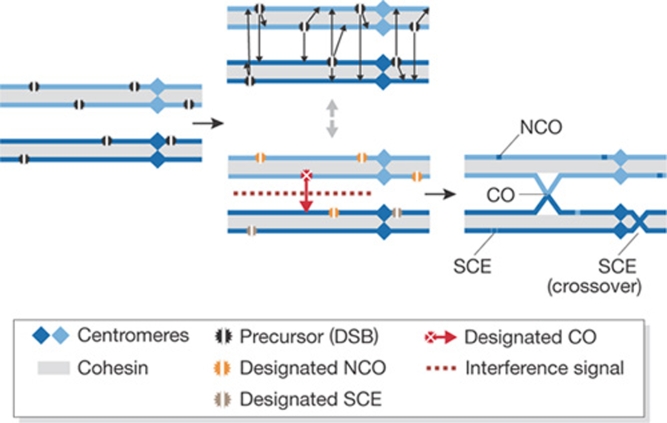Figure 1.
Dynamics of partner choice in meiotic recombination and final formation of crossover and non-crossover products. Two homologous chromosomes are shown, each consisting of two sister chromatids. Meiotic DSBs are induced at multiple sites and each will be repaired by using either the sister chromatid or a chromatid from the homologous chromosome as a template. In addition, each recombination event can lead to either a CO or an NCO. This process seems to be highly dynamic and each event can oscillate between different recombination intermediates (indicated by arrows). Ultimately, each chromosome pair will have at least one CO (obligatory chiasmata) and the occurrence of multiple COs in close proximity will be prevented (interference). CO, crossover; DSB, double-strand break; NCO, non-crossover; SCE, sister chromatid exchange.

